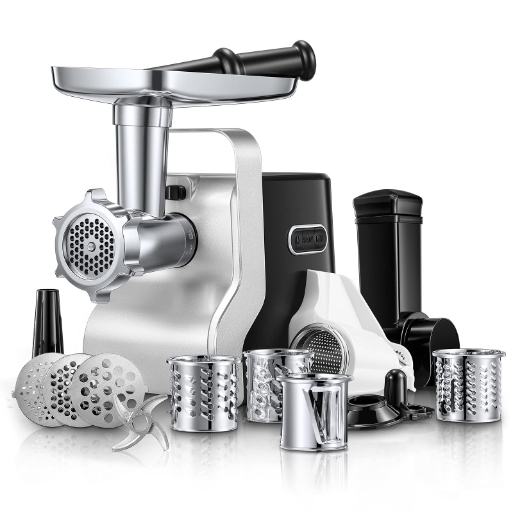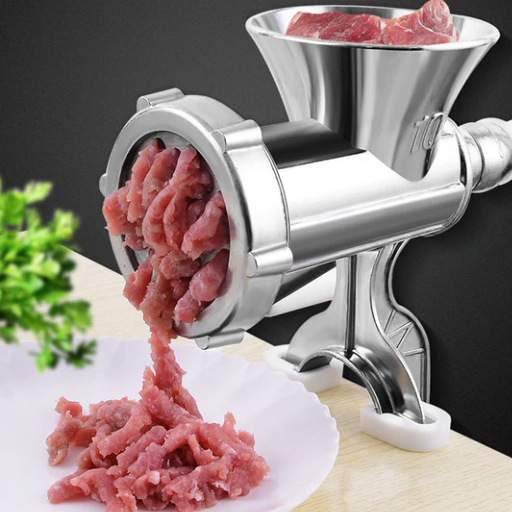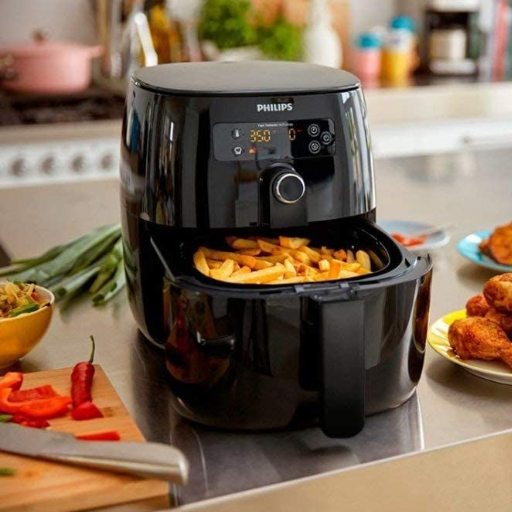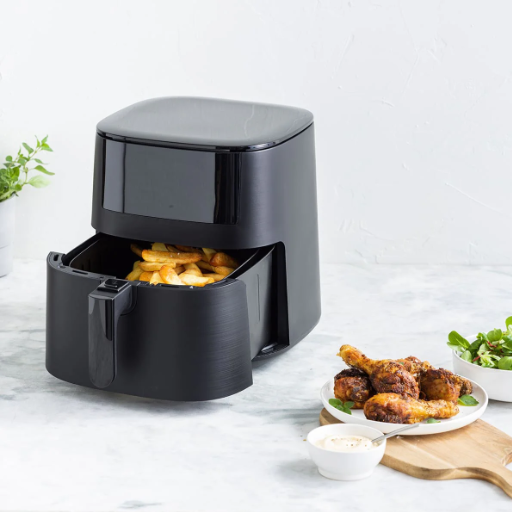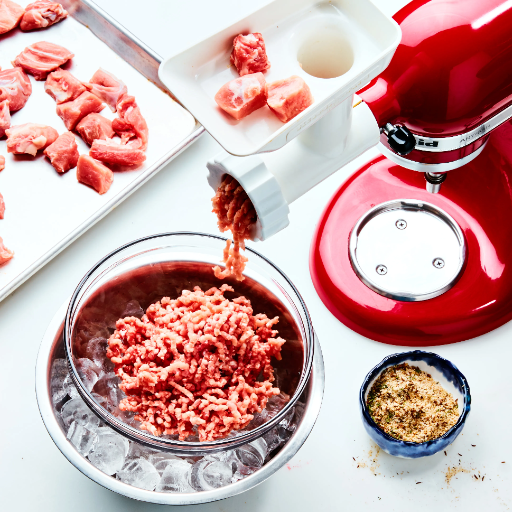Blender chefs, as they are referred to, use the appliance to prepare exceptionally smooth purees and nourishing smoothies, all of which speed up the process of preparing high-quality meals. As crucial as the cooking blender is in modern kitchens, a great proportion of users are unaware of basic functions which range from advanced to poorly explored. It is almost certain that they are nowhere near to fully using the appliance.
One section of the blog is dedicated to explaining how one can maximize the utilization of their cooking blenders, these are covering tips on optimal usage and maintenance strategies, as well as more creative and out-of-the-box functionality unlocking methods. The article caters to both experienced home cooks as well as novices as it seeks to assist everyone in elevating their culinary processes.
How Does a Cooking Blender Work?

A cooking blender is an appliance that integrates blending and cooking by merging the functions of an ordinary blender and a stove. The sharp and strong blades are powered by a motor which rotates at different speeds to chop, puree, or emulsify food. Inconveniently, the blender is also able to steam, simmer, or cook food at the same time due to the integrated heating elements. The more advanced models come with preset programs, smart sensors, and timers which allow precise temperature control. The impressive feats of precision alongside the ability to effortlessly make soups, salsas, sauces, smoothies, and more makes it one of the most versatile appliances in the kitchen.
Understanding the Blade Mechanism
A cooking blender blade mechanism is designed to carefully manage the functions of both blending and cooking. Blades on cooking blenders are usually constructed using stainless steel, which is both highly durable and sharp. Blades also contain straight and serrated edges for chopping, crushing, or pureeing food. The angle of the edge and the motor’s torque determine these operations’ power and effectiveness, along with the consistency of the results.
In advanced models, specifically angled blades and ‘vortex’ technology allows for greater food movement, reducing the need for manual intervention and improving blending. For cooking features, the blades are designed to tolerate the high temperatures produced by the heating element. This design allows parts to continuously blend ingredients throughout the cooking process. These designs allow for the blade configuration and motor performance to work together effectively, which forms the foundation of a cooking blender’s multifunctional traits.
Exploring the Jar and Its Capacities
The blender jar is a key part that ensures proper use, heating, and safety regulations. Most jars are made from BPA-free plastic, tempered glass, or stainless steel since these materials are heat resistant. High-capacity jars are ideal for family-sized portions as they range from 48 to 64 ounces. For smaller servings or special dressings, single-serving jars are available.
Most modern jars are built with specific measurement markings aiding in better recipe execution. Many designs boast thermal insulation or specialized layering that maintains the temperature consistency during the blending or cooking process. Furthermore, the lids are designed with locked liquid-tight cavities, allowing safe venting of steam during blending. Advanced models may feature automatic heating and speed adjustment depending on set temperature, easing in sensor-controlled integration with the motor.
The design of the jar, coupled with the material and size, helps in the maintenance of safety regulation while ensuring maximum user ease and multi-functional cooking.
How the Blender Heats and Blends
Blenders equipped with heating capabilities utilize a combination of high-speed blade friction and integrated heating elements. The friction generated by rapidly rotating blades increases the temperature of the contents over time, which is ideal for creating soups, sauces, or purees. Integrated heating elements, present in advanced models, allow precise temperature control by actively applying heat, enabling users to sauté, simmer, or even boil ingredients within the blender jar. These features often work in tandem with built-in sensors that adjust blade speed and heating intensity to maintain consistent temperatures during the blending process.
The blending mechanism relies on durable, sharp blades paired with a powerful motor to process ingredients effectively. Variable speed controls optimize the texture of the final product, whether it’s a smooth liquid, chunky salsa, or finely ground powder. High-performance models include pre-programmed settings for specific recipes, automating the blending and heating sequence for convenience and accuracy. Together, the heating and blending functions offer an integrated solution for preparing complex recipes with minimal effort while maintaining precise control over both texture and temperature.
What Can You Make with a Cooking Blender?

Through the use of a cooking blender, nut butters, baby food, pancake batter, waffles, creamy soup or rich sauces can all be prepared with great ease and skill. This is because the device performs blending and heating simultaneously, which is specifically beneficial for dishes such as soups and purees. These devices can also make whipping hot chocolate or flavored milk swift and easy, alongside preparing other dips such as hummus and salsa. Cooking blenders are perfect for preparing beverages and dishes alike. Since results are consistent and quality is never compromised, hot and cold recipes can be prepared without any worry.
Creating Soups and Baby Food
Cooking blenders excel at creating soups and baby food by simplifying the process through precise heating and blending functions. To make soups, the blender can sauté ingredients, gently boil broth, and blend the mixture into a creamy consistency, all in one container. This streamlines preparation for creamy tomato soup, hearty vegetable bisque, or even delicate chicken noodle varieties. Similarly, when making baby food, the blender allows you to steam or cook fresh ingredients, such as fruits or vegetables, and then puree them to the desired texture. This ensures nutrient retention and customization for your baby’s dietary needs, offering both convenience and nutritional control in one device.
Blending Smoothies and Frozen Drinks
From monidirectional suspensers to multi-purpose cooking blenders, the process of preparing smoothies and frozen drinks is seamless. A lot of monodirectional suspensers lack powerful motors, however, a cooking blender’s motor will complement its precise controls, working hand in hand in achieving a desired goal. If you want to make smoothies, you can blend fruits, vegetables, yogurt, or even protein powders so that you get a smoothie that is consistent in texture. They can be pre-programmed to break down tough ingredients such as frozen fruits, seeds, or even leafy greens. With programmed suspensers such as these, smoothies are both nutrient-packed and delicious.
Blenders excel in preparing frozen drinks, slushies or even cocktails. The motor will not overburden when crushing ice into fine pieces for these drinks. With a spoon in hand, putting liquid ingredients such as juices, syrups, or alcohol with ice will create refreshing beverages that are chilled to perfection. Ice crush functions are a popular feature among advanced model blenders. Such blenders do not require manual adjustments, hence freeing the user from the identical programming. This precision is what makes cooking blenders stand out. They can be used for a wide variety of drink formulas and recipes, which makes them ideal for entertaining guests or using when making everyday refreshments.
Innovative Uses: Beyond Soups and Smoothies
Blenders nowadays are more than just appliances for making smoothies or soups. They are capable of far more, especially some of the more advanced models. One such feature is grinding almonds, cashews or peanuts into fresh nut butter without requiring oils. They can also be used to make flours from nuts or grains by blending them into powder.
High performance blenders can emulsify sauces as well. They can whip up smooth mayonnaise and creamy dressings with ease. Not only that, they offer seamless preparation of plant-based milk such as soy or almond milk too. All that’s required is blending the pre-soaked nuts and straining the pulp. With highly versatile blenders, batter for waffles, pancakes, and even crepes can be created as well, all with a uniform consistency without any lumps.
From a culinary perspective, these blenders can puree baby food for infants, all while keeping the texture in mind. Moreover, they can crush grains to brew beer or even whip cream for delicious desserts. Blenders truly set themselves apart with the multitude of uses they have to offer, which highlights that they are not just simply appliances for cooking, but an innovative and convenient kitchen tool.
How to Choose the Right Cooking Blender for You?

There are key elements one needs to consider before selecting the appropriate cooking blender that matches their requirements. Start from the blender’s motor power as this is one of the most basic indicators of performance. A higher wattage is certainly more desirable as it improves performance on more demanding tasks such as crushing ice and blending tougher ingredients. Moreover, Container size is also important; ‘smaller blenders are ideal for single servings’ while larger capacities ‘suit family meals or batch preparation’. Quality of material, such as blades, has greater importance in ground stainless steel while containers must be BPA-free for long-term use and safety.
Take into account the additional functions available with the blender, such as preset programs for smoothies, soup, or sauces, as well as its versatility. If you intend to use the blender in quieter areas a few times, then noise levels should also be something you consider. Furthermore, ease of cleaning, such as self-cleaning or dishwasher-safe parts, can save time and effort. Ensure the blender meets your expectations in terms of budget without compromising on essential features or durability. By looking at these factors, you can rest assured knowing you have made a sound decision and aligned the most optimal choice with your culinary needs.
Features of a 300 Watt Blender
The 300-watt blender is a dependable kitchen companion ideal for light to moderate blending activities. Its core attributes include the ability to work with soft fruits, vegetables, and light purees, making it useful for smoothies, baby food, and dressing preparation. The motor is set to blend while using the least possible energy, so there is dissipation efficiency.
Most 300-watt blenders have stainless steel blades to increase durability and effectively process food. Many models have a step-less speed button or a rotary knob that provides better control of texture, consistency, and age. Compactness and lightweight construction also make these units perfect for the elderly or people with smaller kitchens.
An important characteristic of some designs is user friendliness with features like one-touch operation, non-slip bases, and safety containers that are free of BPA devices. Cleaning convenience is often highlighted, especially in cases where blades are detachable. While some of these models use noise absorption technology, high powered variants tend to be louder, so noise levels need to be checked for suitability.
Last but not least regarding positive aspects, affordability stands out as an important benefit. 300-watt blenders usually solve the problem of cost-effective blending. 300-watt blenders cannot be used for heavy-duty tasks like crushing ice or processing hard substances. Buyers should make sure their desires correlate with the watt range for best performance.
Benefits of a Glass Jar vs. Plastic
The merits of glass jars over their plastic counterparts are many, perhaps few more prominent than strength, safety, and saving the environment. Glass is a non-porous material, meaning it doesn’t absorb odors, stains, or flavors. This guarantees that food and beverages remain in their original form, glass also bests plastic in this regard as it is free of harmful chemicals like BPA. Moreover, glass can withstand extremely high temperatures, therefore blending hot liquids or sterilizing glassware in dishwashers is possible.
Preservation of the environment is another key aspect, glass has the least plastic tracks, as it maintains zero pollution while being completely recyclable. Unlike other materials, glass jars are much heavier and can break easily, resulting in danger, especially in homes that have children. To ensure quality preservation and sustainability, glass jars cannot be overlooked as they are often the most environmentally friendly option.
Considerations for a Personal Blender
When selecting a personal blender, it is essential to evaluate several important factors to ensure it meets your specific needs effectively.
- Motor Power: The motor’s wattage is a critical consideration as it determines the blender’s ability to process various ingredients. For smoothies, crushing ice, or blending frozen fruits, a motor with at least 300-900 watts is recommended to achieve optimal performance without straining the device.
- Capacity and Portability: Personal blenders are designed to prioritize convenience and portability. Assess the blending cup size, typically ranging from 8 to 32 ounces, to align with your intended use. Models with travel-friendly, spill-proof lids ensure seamless transitions between blending and on-the-go consumption.
- Blade Quality: High-grade stainless steel blades deliver superior blending efficiency and durability. Opt for blenders with sharp, corrosion-resistant blades that can handle tough ingredients such as seeds, leafy greens, and ice without dulling over time.
- Ease of Cleaning: A blender that is dishwasher-safe or has detachable components simplifies cleaning. Some models even feature self-cleaning functions, reducing maintenance time and effort.
- Durability and Build Material: Consider blenders with sturdy construction and BPA-free plastic or glass containers. Glass is heavier but does not retain odors or stains, while durable plastics ensure lightweight portability and resistance to shattering.
- Noise Levels: For quieter operation, look for models designed with noise-reduction features, particularly if you plan to use the blender during early mornings or late evenings.
- Pricing and Warranties: Lastly, compare price points and prioritize models with warranties to ensure long-term reliability. A balance between cost-effectiveness and performance will provide better value.
Understanding these crucial considerations will guide you toward selecting a personal blender tailored to your lifestyle, offering both functionality and convenience.
How to Maintain Your Cooking Blender?

Maintaining your cooking blender is essential to ensure its longevity and optimal performance. Follow these key steps:
- Regular Cleaning: Immediately after use, dismantle detachable parts and rinse them with warm, soapy water. Avoid submerging the motor base in water; instead, wipe it clean with a damp cloth.
- Blade Maintenance: Check the blades for residue or dullness. Clean thoroughly and replace if they show signs of wear to maintain efficiency.
- Inspect Seals and Gaskets: Periodically inspect seals and gaskets for signs of cracking or damage. Replace them as needed to prevent leaks.
- Prevent Overheating: Avoid running the blender for extended periods beyond manufacturer recommendations to prevent motor overheating.
- Store Properly: After cleaning, ensure all components are entirely dry before reassembly and storage to prevent mold or rust.
- Follow Manufacturer Guidelines: Adhere to the user manual for maintenance instructions, including lubrication or specific cleaning requirements.
Implementing these practices will keep your cooking blender in excellent condition, saving you repair costs and ensuring a consistently reliable performance.
Cleaning Tips: Using Soapy Water
The first step in cleaning your cooking blender with soapy water is to disassemble all detachable parts like the jar, lid, and blades. Afterwards, pour some warm water into the jar until it is halfway filled, then add a few drops of dish soap. Secure the lid and turn the blender on at medium to low speed for thirty seconds to one minute. On completing this, rinse the jar with clean water and dry it thoroughly.
In case residue is hard to clean, manually scrub the blender components using a non-abrasive sponge or brush. This should be done with caution as harsh scrubbing tools can scratch the blades and the jar, negatively impacting its performance over time. Also,, remember that the motor base should never be submerged in water, so always clean it with a damp cloth. Following these instructions and using the soapy water method regularly will ensure cleanliness and prolong the lifespan of your blender components.
Ensuring Dishwasher-Safe Components
To ensure the dishwasher safety of your blender components, first consult the manufacturer’s manual or the product specifications, as these provide definitive guidance on which parts are safe to wash in a dishwasher. Generally, most blender jars, lids, and smaller detachable accessories are made to be dishwasher-safe, but always confirm that they are labeled as such. Place these parts on the top rack of the dishwasher to minimize direct exposure to heat, which could cause warping or damage to certain materials.
It is important to note that the motor base and any electrical components must always be excluded from the dishwasher and cleaned manually with a damp cloth. If dishwasher-safe labeling is unclear, opt for handwashing the components with warm, soapy water to avoid potential damage. Regularly verifying the condition of blender parts after dishwasher cycles can also help ensure long-term functionality without compromising material integrity.
Checking and Caring for the Stainless Steel Blade
Deep and careful maintenance of stainless steel blades is required to keep them sharp and functional, making them one of the most critical components. Signs of bending, dullness, or corrosion are indicators which will help you inspect its condition. To preserve the blending performance, blades that appear worn should be replaced. Blades should be cleaned with utmost care for there is a risk of cutting oneself. One should detach the blade assembly if possible and clean it under warm, soapy water with a soft brush. Instead of harsh detergents, it is best to use ordinary soap lest the steel surface is damaged. To avoid oxidation or rust, blades should be dried thoroughly. Although some blades are said to be dishwasher safe, they should be hand washed to preserve their integrity. The efficiency and longevity of the stainless steel blade will be guaranteed with proper inspection and regular cleaning.
What Are the Safety Tips for Using a Cooking Blender?

- Ensure Proper Assembly: Always confirm that all components, including the jar, lid, and blade assembly, are securely attached before operation.
- Avoid Overfilling: Do not exceed the maximum fill line to prevent spillage, which could lead to damage or injury.
- Handle Hot Ingredients Cautiously: When blending hot liquids or ingredients, allow steam to escape by leaving the lid slightly ajar or use a dedicated venting feature if available.
- Unplug When Not in Use: Always unplug the blender when assembling, disassembling, or cleaning to avoid accidental activation.
- Use the Blender on a Stable Surface: Place the blender on a flat, sturdy surface to prevent tipping during use.
- Avoid Contact With Moving Parts: Never insert utensils or hands into the jar while the blade is spinning. Use a tamper if provided for ingredient adjustments.
- Follow Manufacturer Instructions: Adhere to the guidelines provided in the user manual to maintain safe and effective operation.
These practices will help ensure both user safety and the longevity of your cooking blender.
Why You Should Stand Away from the Blender
When using a blender, steps should be taken to diligently mitigate any chances of injury from scalding or the mechanical faults of a broken jar or motor. Blenders are prone to injuring the user with burns and serious injuries due to steam from hot liquids, and the splashes of vibrating gunk. All components and ingredients should be adequately set, ensuring that there are no fragments or parts which can fly off in case excessive vibration occurs. Where limb dismemberment is eminent, the chances of getting infamously harmed by the device can be easily tackled by maintaining a safe distance from the high-powered and extremely dangerous gunker while it is still on. By controlling proximity to the appliance, the likelihood of coming in contact with the uncovered blades is suitably reduced. One cannot live an inflated life which descends to complete neglect of rules and attempts to operate these instruments unharnessed. Proper oversights must be put in place so the devices can be attended to safely.
How to Open the Vented Lid Cap Safely
Opening a vented lid cap requires careful attention to ensure safety and prevent potential hazards such as spills or pressure-related injuries. Follow these steps for a safe procedure:
- Inspect for Pressure Build-Up: Before attempting to open, visually inspect the cap for signs of pressure, such as bulging or hissing sounds. If the container is under pressure, release it slowly according to the manufacturer’s instructions.
- Use Protective Equipment: Wear protective gloves and safety goggles to guard against possible exposure to hazardous liquids or sudden releases of pressure.
- Turn Slowly: Begin to unscrew the cap slowly and cautiously, ensuring any pressure dissipates gradually. Do not remove the cap entirely in one motion as this could lead to sudden spills or sprays.
- Vent Carefully: If a venting mechanism is present, utilize it to release trapped pressure. Ensure the container is in a well-ventilated area during this process.
- Position Safely: Keep your face and body away from the direct path of the lid opening to avoid unexpected contact with fluids or vapors.
By adhering to these steps and referencing the specific guidelines provided by the manufacturer, you minimize the risks associated with opening a vented lid cap.
Understanding the Current Temperature at the Top
The existing temperature of a specific area is attained by taking into account the geographical location, current weather conditions, and weather data for that moment. Global weather reporting agencies fetch temperature readings through the use of comprehensive satellite systems and ground-based weather stations, along with powerful forecasting systems. The maps and graphs generated by The Weather Channel, AccuWeather, and National Weather Service websites rank among the top three sources searched for temperature information on Google. These platforms ensure accuracy by employing continuous updates and data fusion using cutting-edge algorithms. Consequently, these sources provide reliable and region-specific temperature information with free access.
References
Frequently Asked Questions (FAQ)
Q: How can I effectively use my cooking blender for both hot and cold recipes?
A: To unleash the power of your cooking blender for hot and cold recipes, utilize preset settings designed for specific tasks. The blender will heat ingredients for hot dishes while maintaining the ability to crush ice for cold recipes. The LED display will show the selected settings, making it easy to transition between different types of recipes.
Q: What are the advantages of using a powerful blending device like a power blender?
A: A power blender is ideal for emulsifying smoothies, crushing ice, and even cooking soups. Its powerful motor and versatile functions allow it to handle solid and liquid ingredients alike—all with precision and ease.
Q: How can I make the perfect smoothie using a blender for smoothies?
A: Start by adding liquid ingredients first, followed by softer items, and ice or frozen fruit last. Use the ice crush function if your blender has one, and blend at a variable speed to achieve the desired consistency. A spatula can help scrape down the sides if needed.
Q: What are some tips for maximizing the use of a 6-cup food processor attachment?
A: The 6-cup food processor attachment is perfect for chopping, slicing, and shredding ingredients. Ensure not to overload the container and use the pulse function for better control over the chopping process. Always secure the lid before processing.
Q: How can I safely use an immersion hand blender for blending hot liquids?
A: When using an immersion hand blender for hot liquids, keep the blender immersed to avoid splattering. Use an easy control grip stick mixer to maintain stability and start blending at a low speed, gradually increasing to the desired level.
Q: What features should I look for in countertop blenders to ensure versatility?
A: Look for countertop blenders with a range of speeds, such as a 10-speed countertop blender, and those featuring stainless steel blades. These features provide flexibility for a variety of recipes and ensure efficient blending.
Q: How do I maintain my blender to ensure it lasts?
A: Regularly clean your blender by disassembling the parts and washing them. Most parts are dishwasher-safe on the top rack. Avoid contact with the blades during cleaning. Make sure the glass pitcher and other components are dry before reassembling.
Q: What is the benefit of using a travel cup with my blender?
A: A travel cup is convenient for blending smoothies or shakes directly into a portable container. It allows for easy transport and consumption on the go, without needing to transfer the drink from the blender.
Q: How can I prevent boil-overs when using a versatile heating blender?
A: Use the boil-over guard to prevent spills and messes. The blender will continue to beep if a boil-over is imminent, and you can adjust the settings or reduce the quantity of ingredients to mitigate the risk.

